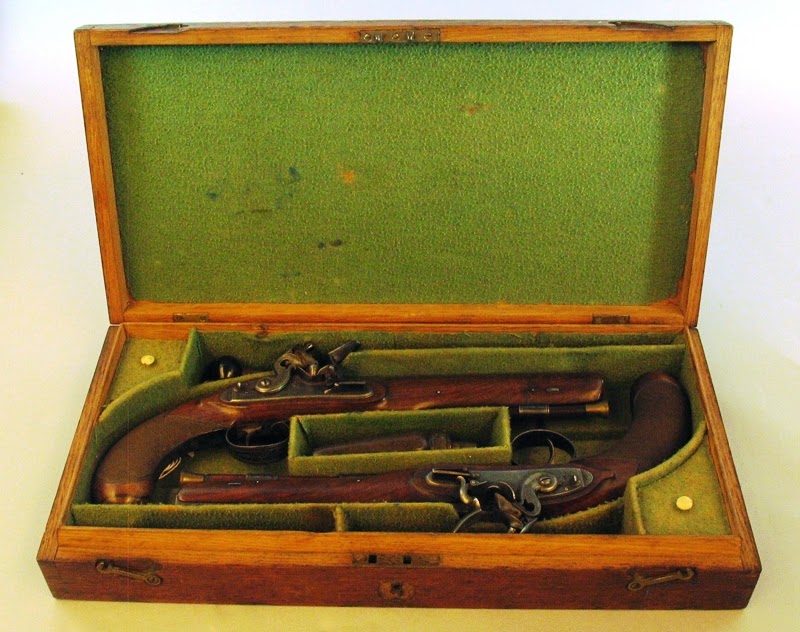Seafaring was always a dangerous profession. Open any logbook, and you’ll find a litany of drownings, falls, and other injuries afflicting a crew. Except in extreme situations like shipwreck or battle, these misfortunes were separated by weeks or months. But sometimes strange things happen without reason or explanation. When you throw a set of angry young men with a high sense of personal honor into the mix, things turn deadly quickly.
The following article appeared in the New York Gazette about November 8, 1810, and promptly caught the eye of every newspaper editor north and south.1
The following extraordinary succession of calamities took place last month on board the U.S. Frigate Constitution, Capt. Hull, in the short space of four days.
While Capt. Hull was on shore at Sandy Hook, where the Frigate was lying at anchor, six names on paper were handed to the Commanding Officer for permission to go on shore- he marked four names as permitted, saying that all could not go. It so happened that he marked those of Morgan and Rodgers two midshipmen, between whom a duel took place at that time as mentioned in the papers, and their two seconds – the result of the duel it is known was the death of Rodgers, and Morgan wounded – the dead body was the same evening carried on board the Frigate, and the next day with the usual ceremonies buried on shore, while the procession of boats for this purpose were moving towards the shore, a man fell from the mast head of the frigate and was killed, in a quarter of an hour afterwards another fell from the same place and was so hurt that he died the next day; while they were lowering this wounded man into the cockpit another fell backwards into the cockpit and badly fractured his leg – the next day the frigate sailed for the Delaware, and the day after while she was going up the bay at a rate of ten knots an hour, a midshipman fell over board and was drowned, while the boats were lowering away to get to his relief, the stern boat with a pendant and three men in it was capsized and they were all immediately plunged into the water, from which there were with difficulty rescued by the surrounding boats.
By referring to the ship’s logbook and a series of letters between Isaac Hull, John Rodgers, and the Secretary of the Navy, we can confirm some of this unfortunate account. On October 16, 1810 Lt. Alexander Scammel Wadsworth permitted Midshipmen Richard Rodgers, Charles W. Morgan, and Archibald Hamilton, and Surgeon’s Mate Samuel Gilliland to go ashore near Sandy Hook. It was not unusual for the “young gentlemen” to stretch their legs, hunt, or explore the countryside. Only this time, some slight or some irritating character trait had caused an irreparable rift between Rodgers and Morgan, and their only recourse, under the prevailing code of gentlemanly behavior, was to meet on the “field of honor.” Their “seconds,” Hamilton and Gilliland tried their hardest to prevent the meeting, but in the end they could not reconcile the parties. With loaded pistols, the two midshipmen faced each other at twenty paces. At the word from their seconds they fired at each other simultaneously. Rodger’s ball grazed Morgan’s breast, but Morgan’s bullet killed Rodgers on the spot.

Rodger’s body was prepared for burial on board Constitution, and on the 17th a party rowed it ashore for burial at Sandy Hook. Oddly, the ship’s log makes no mention of the sailors who slipped and fell from the masthead, or the one who fell down the hatchway. Unfortunately, the surgeon’s logs for this period no longer exist, so there is no way to confirm these injuries.
On October 20, as the ship stood into Delaware Bay, Midshipman Thomas S. Sprogle, who’d been aboard for only four months, stumbled off the main chains and fell into the water. Poor Sprogle couldn’t swim, and even though a life buoy landed only a few feet from him, he sank almost immediately. The log is again mysteriously silent about the accident with the stern boat, but since no lives or equipment was lost, this is understandable.
Had the newspaper reporters waited a few months, they’d have heard of yet more misfortunes from Constitution’s crew. While leaving the Delaware at the beginning of December, Seaman Samuel Francis fell out of the mizzen shrouds, hit the mizzen chains, and plunged into the water, where he drowned (if he wasn’t already dead from the blow). Once the ship cleared the Delaware Capes, and surging ahead at eight knots, Seaman Caleb Martin fell overboard. He’d been helping to stow the anchor on the bows, and though the life buoys were again pitched to him, the wind carried them away from him faster than he could swim, and he ultimately drowned before he could be picked up by a boat.
Finally, on February 19, 1811, while the ship lay at anchor in New London, four midshipmen went ashore to fight yet another duel. This time the combatants were Midshipmen Joseph Brailsford and Charles M. Fowle. William Laughton and John Packet served as their seconds. This time, the duel was not immediately deadly, but Fowle received a ball in his thigh. Captain Hull, fed up with this kind of conduct, suspended all four from duty, and had them transferred from the ship. Sadly, Fowle’s wound turned septic, and he died on March 13.
All in all, it had been a wretched five months on board Constitution. And yet, in a year and a half, many of these same officers and men would distinguish themselves in battles with the British Navy. That gave them all other outlets for their ardor.
1 This version appeared in the Pittsfield, Massachusetts Berkshire Reporter on Nov. 14, 1810.
The Author(s)
Matthew Brenckle
Research Historian, USS Constitution Museum
Matthew Brenckle was the Research Historian at the USS Constitution Museum from 2006 to 2016.
